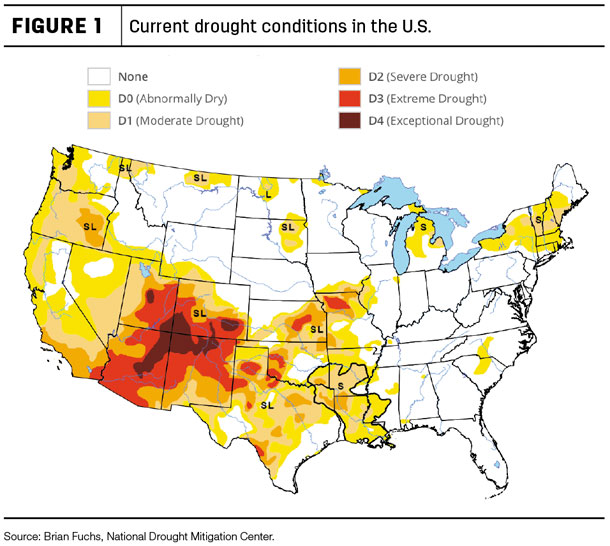In a recent Southern Plains drought update webinar, experts reported that the drought peaked in May in northwest Oklahoma and the Texas and Oklahoma Panhandles, but is still going strong in Colorado, New Mexico and Arizona. As of July 10, almost 80 percent of the Southern Plains is suffering from drought conditions, with almost 30 percent of the area classified as severe (D2) to extreme (D3) drought conditions, according to the National Integrated Drought Information System. In a recent Southwest drought webinar, experts said over half of the Southwest region is in severe (D2) to exceptional (D4) drought, with the bulk of the worst drought areas in the Four Corners region of Utah, Colorado, Arizona and New Mexico.

Some of the effects of the drought are already apparent. Some crops have already been harvested at very poor yields, and others are not expected to perform much better. Ranchers have also had to make cutbacks to stay afloat. Between wildfires and drought, forage in the Southern Plains is a high priority and in very short supply. Some have been forced to cull their herds to match the demands of their forage shortage. Many producers with a short supply of available grazing have resorted to supplemental feeding and run the risk of using up their already-short supply of winter hay, while some have no reserves at all. In areas revitalized by June rain, supplemental feeding has ceased.
Near-normal to above-normal rainfall in the region is anticipated for July and August. Normal rainfall would avert the impacts of long-term drought. The seasonal outlook sees drought improvement or elimination by the end of September.
Weather experts predict much-needed precipitation from the monsoon period (July-September) arriving in early July with an almost 80 percent chance of El Niño, which should diminish chances for a snow drought this winter in the Southern Plains. For the Southwest region, experts warn that if they see a wetter-than-normal monsoon period, areas burned by wildfire could see an increased risk of flash flooding. ![]()

-
Carrie Veselka
- Associate Editor
- Progressive Cattleman
- Email Carrie Veselka







